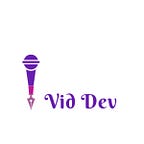Behag – Ragapedia 10
Ragapedia is a series of posts I am writing, one Carnatic Raga per post, on my understanding of the ragam, carnatic compositions in that ragam and how it has been dealt within films. This post is about the raga Behag, an enchanting ragam that was derived form Hindustani music (Bihag) and adapted to the Carnatic style.
Behag is said to be a janyam of the 29th melakartha Sankarabaranam, but it does use both the madhyamams.
Aarohanam – S G3 M1 P N3 D2 S
Avarohanam – S N3 D2 P M2 G3 M1 G3 R2 S
Being a ragam with vakra (zigzag) scale and having foreign notes, one can say that Behag can be more defined by its distinct phrases than by just a scale.
Carnatic Behag however has been influenced by other ragas such as Khamas and has foreign phrases and notes beyond its Ma’s, according to Prince Rama Verma.
Carnatic Compositions
The Trinity have not composed in Behag, it could have been borrowed from Hindustani music after their times.
- There are many Gopalakrishna Bharathi compositions in Behag – Idhudhano Thillai Sthalam, Aadum Chidambaramo, Irakkal Varamal Ponadhenna
- Kanden Kanden by Arunachala Kavi
- Vanajaksha, the varnam that was perfected and popularised by TR Subramaniam
- Sankara Nin by Neelakanta Sivan
- Narayanathe Namo by Annamacharya, tuned by Balamurali Krishna
- Samudravana Kandu by Purandara Dasar
- Saaramaina, a famous javali by Swati Thirunal; he has also composed other krithis such as Smarajanaka, Reenamadhanutha
- Vagaladi Bodhanalaku, a javali by Thirupathi Narayamaswami
- Oruthi Maganaai, an Aandal thiruppavai is sung in this ragam (the Ariyakkudi tune)
- Muruganin Maru Peyar by Guru Surajanandha
- Kamaladhala Kannan by Dr. ES Sankaranarayana Iyer
Apart from this not so extensive list and many thillanas and javalis in Behag, this ragam is also extensively used in viruthams, ragamalikas and RTPs in part because of the charm it provides while shifting to the ragam and the ease with which it can be distinctly painted.
Listen to…
Listen to this very popular varnam in the ragam Behag, with the most popular varnam beginning, “Vanajaksha”.
Use in Movies
Though Wikipedia gives you a big list of songs from Tamizh movies, I would say that most of them were probably influenced by Behag.
However, AR Rahman has used this ragam in unique ways in different songs and each one emotes differently. The ghazal-ish “Suttum Vizhi Sudar Dhan” from Kandukonden Kandukonden, “Mudhal Murai” from Sangamam and the traditional “Malargal Ketten” from OK Kanmani are all set in Behag.
The song featured in this post is a Malayalam song from the movie Gaanam (1982), “Aalapanam” composed by Dakshinamurthy where the voices of Yesudas and Janaki sing alternate phrases in a ragamalika. The part that begins “jeevana sankalpa” is a classic Behag where they even sing swara kalpana and korvai at the end of that part.
Behag, the Cure
Interestingly, I found a lot of curated content on YouTube where musicians have played, sung and experimented with Behag. Though the songs are the same as listed above, there is a magic created when potentially good music combines with potentially good video making.
Madrasana Unplugged – Charumati Raghuraman playing Vanajaksha varnam on the violin
Darbar – Bharat Sundar singing the Lalgudi thillana
Indian Raga – Indian Raga fellows performing Saramaina, a composition of Swati Thirunal; another video which is a jugalbandhi of sorts in the Carnatic and Hindustani version of Behag
First Edition Arts – TM Krishna singing a Kannada poem in Behag; and also Saramaina in another video; Ramana Balachandran playing the same song Saramaina in veena in yet another video.
